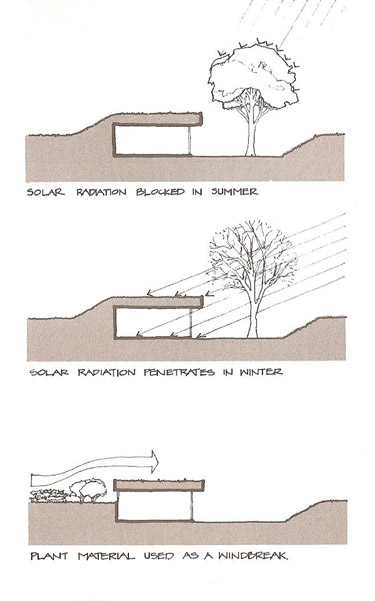earth-sheltered homes: effects of vegetation

Effects of vegetation on earth-sheltered homes.
Trees and shrubs on a building site have uses too numerous to mention, ranging from symbolic and aesthetic uses to erosion and noise control. However, in the context of an earth-sheltered building, the existence of trees and shrubs on a site as well as the planting of new vegetation can be considered as another potential energy saving feature. Although exact amounts of energy savings are difficult to predict, there are uses of vegetation that are known to have a significant impact on energy performance.
One effective use of trees in an earth-sheltered design is to shade windows on the south side of the house in the summer when the direct solar radiation is undesirable. If deciduous trees are used on the south side, they drop their leaves and allow the solar radiation to reach the windows in the winter when it is most needed. A second important uses of vegetation to reduce energy consumption is wind control. In an earth-sheltered design the earth berms may provide all of the necessary wind protection on the north and west sides. However, if any window openings are exposed to winter winds, evergreen plant materials can contribute to significant energy savings. In a report prepared for the Minnesota Energy Agency, a study in South Dakota is referred to which compares two identical houses, one with plants on three sides of the house and one with no windbreaks. The house with the windbreaks experienced a fuel reduction of 40%. This not only points out the effectiveness of trees and shrubs in reducing energy costs but it also indicates the potential savings that could be projected for a house that was earth-sheltered on three sides providing a far more complete windbreak.
